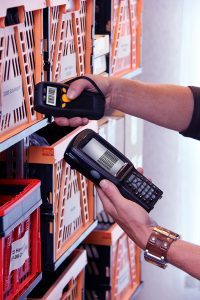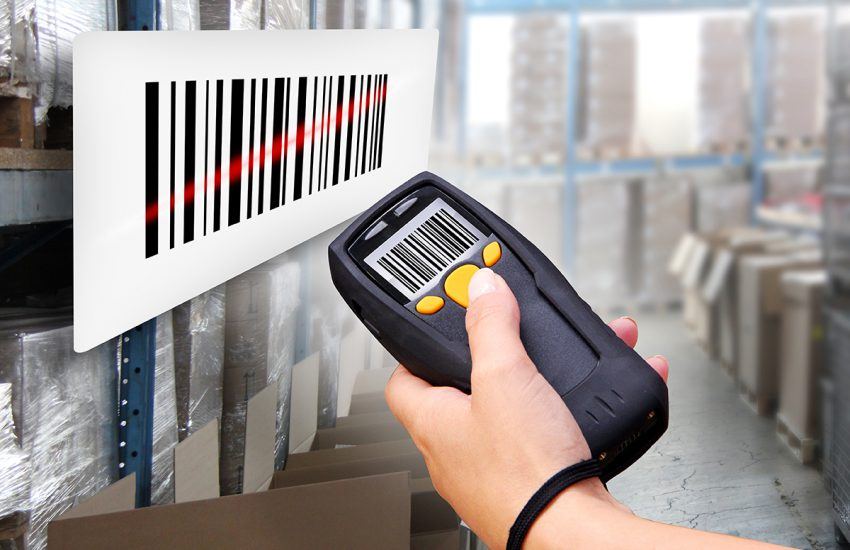Featured Expert: Brady Stevens, Project Manager/GS Mobile Manager at Global Shop Solutions
If you’re not combining barcode scanning and data collection technology with your ERP software, you’re inevitably going to pay more in labor costs, excess inventory, and errors.
Real-time inventory data is increasingly seen as the lifeblood of e-commerce and omnichannel commerce initiatives. With customers demanding high levels of visibility into inventory status before, during, and after every transaction, companies have to know what’s in stock, what’s in transit, what’s being returned, and when they need to re-order.
Inventory has to be accurately tracked, or it can negatively impact warehouse operations, fulfillment, receiving, and customer service. However, according to some estimates, nearly half of small and midsize businesses don’t track inventory at all or use manual methods. A recent Zebra Technologies study found that nearly 40 percent of companies still aren’t using mobile computer or mobile barcode scanners.
 Managing inventory without real-time barcode scanning is only going to get more difficult as companies expand their SKU count and increasingly process larger numbers of smaller orders that are typical of e-commerce and omnichannel operations. As the number of inventory mistakes increase, they can have a ripple effect across the entire business.
Managing inventory without real-time barcode scanning is only going to get more difficult as companies expand their SKU count and increasingly process larger numbers of smaller orders that are typical of e-commerce and omnichannel operations. As the number of inventory mistakes increase, they can have a ripple effect across the entire business.
“When companies don’t have inventory visibility, it can cause various problems,” says Brady Stevens, Project Manager/GS Mobile Manager at Global Shop Solutions, an ERP vendor that partners with EMS Barcode Solutions. “For example, they may run out of product and not discover the problem until they’ve already completed an online sale. Now, they’re missing delivery deadlines and will likely have to follow up with customers and offer make-goods. It can lead to profit losses at best, and often leads to customer losses as well.”
When companies don’t have inventory visibility … they may run out of product and not discover the problem until they’ve already completed an online sale.
No Barcoding, No Visibility
Here’s an example of a typical scenario of a company using an ERP system without mobility or barcode scanning: A warehouse worker uses a paper document (i.e., pick list), which lets him know where to find specific products for an order. The worker picks all the parts (kitting) and then walks to a work station to confirm the job has been completed. After that, the order is ready to be shipped.
There are a number of things that can go wrong in this process without real-time visibility, and they all have a cost:
Unnecessary Labor Costs: Without using barcode scanners, there’s a lot of time wasted typing information into the computer when employees retrieve their pick lists and then confirm that they have picked all of the necessary items to fulfill the order.
If there are mistakes, then at least some of that labor is duplicated as workers return to the bins to pick the right items and then re-key the order information. The longer it takes an employee to process a single order, the more employees you’ll need to keep up with increasing volumes. Scanning accelerates the data collection and entry process.
Data Entry Errors: Manual data entry always leads to errors. Once those errors are in your software systems, they create inventory inaccuracies and shipment mistakes that can be difficult to spot and correct. With barcode scanning, all of the data entry is automated and initiated by the barcode label; there’s no opportunity for mis-keying a SKU or item quantity.
Picking Errors: Picking errors can cost a company tens of thousands of dollars per year. In industries that handle more expensive goods, the cost can be even higher. Picking and putaway are rife with opportunities for mistakes ― employees can inadvertently pick the wrong item, pick the wrong number of the right item, put inventory in the wrong location, or make data entry or counting errors during physical inventories.
Barcode scanning and mobile computing can eliminate most of these problems by providing real-time confirmations that the correct SKU has been picked and in the right quantity.
Excess Inventory: Without accurate inventory data, most companies over-compensate for their lack of visibility by increasing inventory. This is a costly investment, as it not only results in unnecessary purchases and higher inventory costs, but also an increase in obsolescence.
With extra inventory, there are also more write-offs and write-downs, which can cut into profitability.
Lack of Visibility: Knowing how much inventory you have and where it’s going doesn’t just affect your ability to ship accurately. Without accurate, real-time inventory data it’s almost impossible to determine key performance indicators (KPIs) like on-time shipments, perfect order percentages, out-of-stocks, etc. This data is necessary if you want to make any kind of performance improvements ― it helps create a baseline and makes it easier to identify problem areas in your inventory processes.
The data created through mobile barcode scanning can help determine where the bottlenecks are in your inventory management operations, as well as identify where mistakes are being made and how well you’re performing against your customer expectations and your own internal goals.
If you haven’t deployed mobile barcode scanning to help track and manage your inventory, you are likely absorbing unnecessary costs and risks created through wasted labor, excess inventory, and picking/shipping mistakes that can ultimately result in lost customers.
To learn more about how you can take advantage of the cost-saving benefits of barcode scanning with Global Shop Mobility implementation, contact an EMS Barcode Solutions inventory specialist today.

